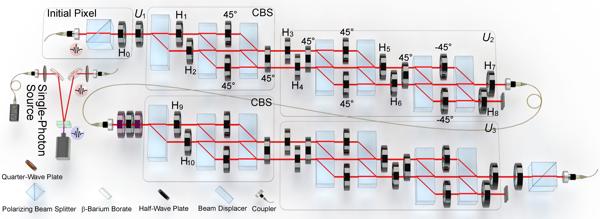The fundamental principle of machine learning (ML) is the ability of machines to reveal the hidden patterns by learning from existing samples and carry out future work accordingly. The interdisciplinary field of quantum machine learning has seen astonishing progress recently, where novel algorithms presage useful applications for near-term quantum computers.
A concrete example is pattern recognition, where accurate modeling requires an exponentially large Hilbert-space dimension, especially for quantum classifiers, which can lead to unique advantages over their classical counterparts. Such a quantum advantage derives from the efficient exploitation of quantum entanglement that also underlies the extraordinary interpretability of tensor networks (TNs), a powerful theoretical framework originating from quantum information science and with wide applications in the study of strongly correlated many-body systems.
Recent works on TN-based ML algorithms, due to their quantum nature, exhibit competitive, if not better, performance compared to classical ML models such as supportive vector machines and neural networks. It is thus tempting to demonstrate TN-based ML algorithms in genuine quantum systems, with the hope of tackling challenging real-world tasks.
However, major obstacles exist, as TN-based ML algorithms typically require an unwieldly large Hilbert-space dimension to process the practical tasks. The real-life datasets contain large amounts of samples, and individual samples typically consist of hundreds or thousands of components. The problem is made worse by the limited number of noisy qubits on currently available quantum platforms. So far, TN-based ML has yet to be demonstrated on any physical system.
The research group led by Prof. P. Xue from Beijing Computational Science Research Center and their collaborators, Prof. S.-J. Ran from Capital Normal University and Prof. W. Yi from University of Science and Technology of China successfully perform the classification of real-life, hand-drawn images on a quantum mechanical platform of single photons, using a tensor-network-based ML algorithm. The research results are published in Photonics Research, Volume 9, No. 12, 2021(Kunkun Wang, Lei Xiao, Wei Yi, Shi-Ju Ran, Peng Xue. Experimental realization of a quantum image classifier via tensor-network-based machine learning[J]. Photonics Research, 2021, 9(12): 12002332).

Fig. Experimental setup of quantum classifier with single photon.
By combining a quantum TN representation of hand-drawn digits and optimization based on entanglement entropy, classifications of real-life images using two qubits encoded in single photons are demonstrated with a success rate exceeding 98%.
Specifically, the researchers focus on the minimal task of binary classification for hand-written zeroes and ones. The TN representation allows to extract a handful of the most important features using an entanglement-based optimization, hence requiring few Hilbert-space dimensions. Through the quantum-efficient scheme, the features are then encoded into two-qubit heralded single photons. The gate operations for the classifier are trained and optimized through supervised learning on classical computers, and the results of the classification are read out through projective measurements on the output photons.
Facilitated by the versatility afforded by optical interferometer networks and techniques, and with special designs such as connecting adjacent layers with a single-mode fiber for better stability, the experimental setup is scalable up to more complicated, multi-layered constructions. This would open up the avenue of implementing more powerful quantum machine learning protocols capable of solving more complicated real-world tasks.
Although the setup work with photons, the approach here is amenable to other physical realizations such as nitrogen-vacancy centers, nuclear spins and trapped ions, and the scheme can be scaled to efficient multi-qubit encodings of features in the tensor-product representation, thereby setting the stage for quantum-enhanced multi-class classification. While in the current scheme, the training process is carried out classically, it is hopeful that the photon-based quantum classifier can be upgraded to be fully quantum mechanical, based on the full control of single photons and the modular design of the setup.


